A dive into Luis Robert's September slump

After the White Sox victory over the Twins on August 31, Luis Robert was hitting .298/.348/.612, with a .398 wOBA and a 157 wRC+. In that 8-5 victory, Robert was 2-for-4, with a mammoth, 449-foot (111 mph exit velocity) home run to tie the game in the seventh and later, hit the go-ahead double in the ninth.
To that point, Robert was tied for the third-highest fWAR in baseball (1.8). He was arguably the most valuable player on the team when considering his defensive performance in center field.
Since then, Robert is hitting .103/.185/.155 with a .163 wOBA and a wRC+ of -4, contributing to a -0.2 fWAR.
What happened? Did pitchers suddenly figure him out? Are pitchers attacking him differently? Is this just a three-week slump that virtually every major-leaguer runs into eventually? Should we be worried?
We know about Robert's propensity to swing. There aren't many pitches that don't appeal to the phenom. His O-Swing% is almost 18% above average, his SwStr% is 14% above average and he is swinging at an astonishingly-high 60% of pitches. His SwStr% is the highest in baseball while his O-Swing% and overall Swing% trails only Baltimore's Hanser Alberto and Oakland's Stephen Piscotty.
What mitigated this through August was the fact that Robert was still a 57% above-average hitter. His approach, as drastic as it was, was working.
But here we go, right? It clearly was not sustainable, and Robert must be seeing the results of pitchers exposing tendencies that have seemingly gotten worse.
Not so fast. Robert's O-Swing% has remained constant, along with his Swing%, Z-Contact% and SwStr%. What's most surprising is that he's actually seen pitches in the zone 5% more, from 35% up to 40%. I previously theorized that pitchers would just stop throwing Robert any strike,s and let him get himself out chasing pitches. More pitches to hit for Robert seems ideal, and it should be. The problem is that he's stopped hitting them. Robert isn't chasing more pitches, yet his K% is 5% higher in the month of September.
Let's dig a little deeper.
In July and August, Robert had a 91 mph average exit velocity, with a 12.8 degree launch angle and .411 xwOBA. That'll play.
What won't is what he's done since — an 80 mph average exit velocity, with a 22.8 degree launch angle and a .210 xwOBA. The pitches are there; he just not hitting them with the same authority. From just watching the games, we've noticed that Robert has started fouling off a lot of hittable pitches — oftentimes in good counts, where he seems to be right on the pitch, but he's just under it. The data backs this up.
When you isolate pitches that are in the heart of the plate, as defined by Baseball Savant's "attack zones," Robert has the sixth-highest foul ball percentage in baseball this September, at 48.3% in these zones. Almost half of the pitches that he has the best chance to do damage on are being fouled off. The only players with more foul balls per pitch in these zones are Omar Narváez, Michael A. Taylor, Miguel Sanó, Austin Romine and Derek Dietrich. In July and August, Robert was only fouling off 32.1% of these pitches, which ranked 78th in baseball.
What's also important to note is Robert's Whiff% on these pitches. In July and August, it was 24%. In September, it has actually dropped to 21%. Combining these rates with foul ball rates, Robert's total Whiff% plus foul ball rate was 56% though August 31 (ninth in baseball) and 69% since then (second in baseball to Taylor).
A whiff is never good, but a foul ball can be good on a two-strike pitch, especially a good pitch, to extend the at-bat. But remember, these are pitches in the heart of the zone, pitches that Robert can't afford to miss given his approach. When these are missed, Robert finds himself in more two-strike counts where the odds are overwhelming that he won't see another pitch as good. This is how you strike out more without chasing more pitches. Robert's 157 wRC+ was largely a product of mashing mistakes. When he's not doing that, we see the hitter he's been over the last three weeks — a hitter that's 161% worse.
The question is, how can Robert just stop hitting the pitches he was before? What gives with these foul balls? As I previously mentioned, he's been under a lot of them. This can be seen in games with foul balls up and back towards the press box, but also on the balls he is putting in play. His IFFB% (infield fly ball) is up, from 6% to 35%. Think about that — more than a third of the balls he's put in play have been pop-ups on the infield during this stretch.
If you have paid attention to key subjects of baseball analytics through the past three to five years, spin rate has a targeted metric for analytically-inclined teams. Without getting too much into the detail of it, what spin on a baseball does is help it fight against the forces of gravity that are pulling it down. A fastball with a higher rate of backspin is going to not drop as quickly as one with less spin. Therefore, it can trick the eyes and brains of hitters. A human set of eyes physically cannot track a 90+ mph pitch fully from release to contact point. It's impossible. Luckily, our brains make predictions for us as the ball disappears — allowing hitters to hit. However, if the brain predicts where a typical pitch will end up, and the pitch has a higher spin rate, hitters are going to swing under it, resulting in a lot of whiffs, foul balls and pop-ups. The brain sends a signal to the rest of the body to position the hitter's hands, hips, etc. at a certain point, only to be tricked by the physics of that particular pitch. It's why a high spin rate is so desirable for a pitcher's fastball.
This relates to Robert's slump because many of these pitches he is fouling off are higher-spin fastballs. In July and August, he had a 95 mph average exit velocity and a 15.2 degree launch angle against fastballs with a spin rate of 2300 rpms or higher. In September, he has an 81.4 mph average exit velocity and a 35.6 degree launch angle against these pitches; he's not staying on top of them, which is what he needs to do. Overall, Robert has a .219 xwOBA on fastballs in September, while in August, he was at .424. It's virtually impossible to succeed without hitting hittable fastballs.
Here's a good example from August. Robert was able to tattoo this pitch off of a really good pitcher in Brandon Woodruff. Even though it was an 0-2 mistake, it was still a 97 mph fastball with a 2398 rpm spin rate that was turned around at 106.1 mph.
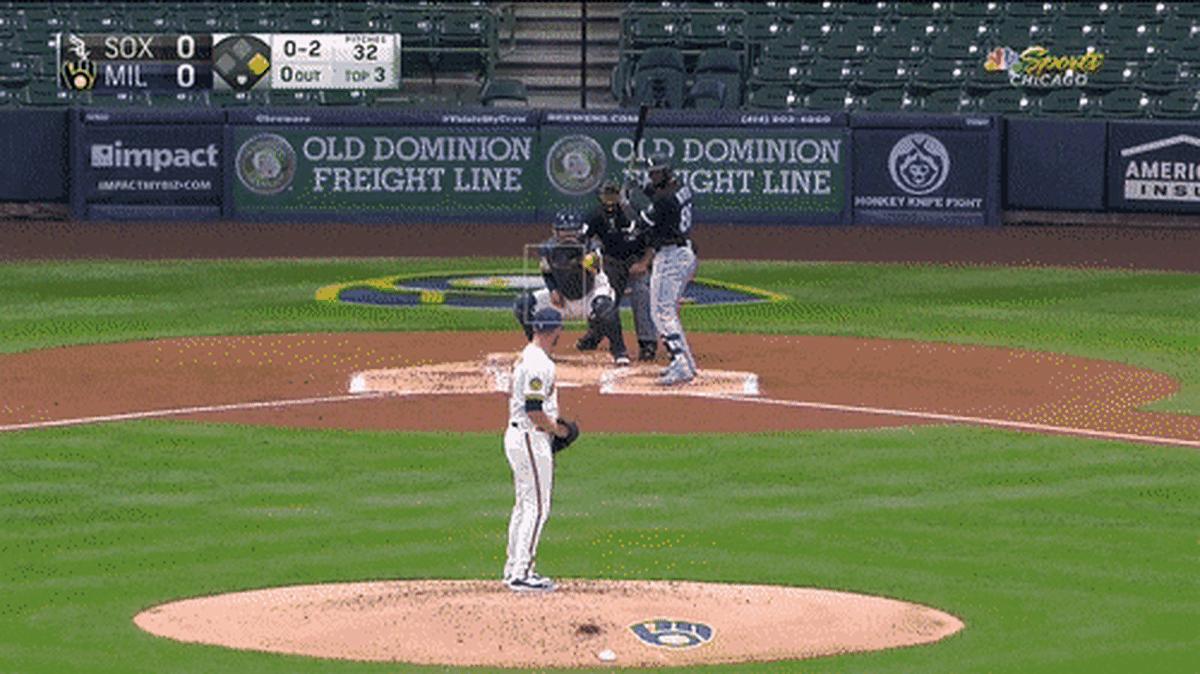
Here's another; a pitch up and out of the zone with two strikes, but Robert is able to get on top of it for a knock. This pitch had a 2329 rpm spin rate and was hit 104.9 mph, against another good pitcher in Aaron Civale.
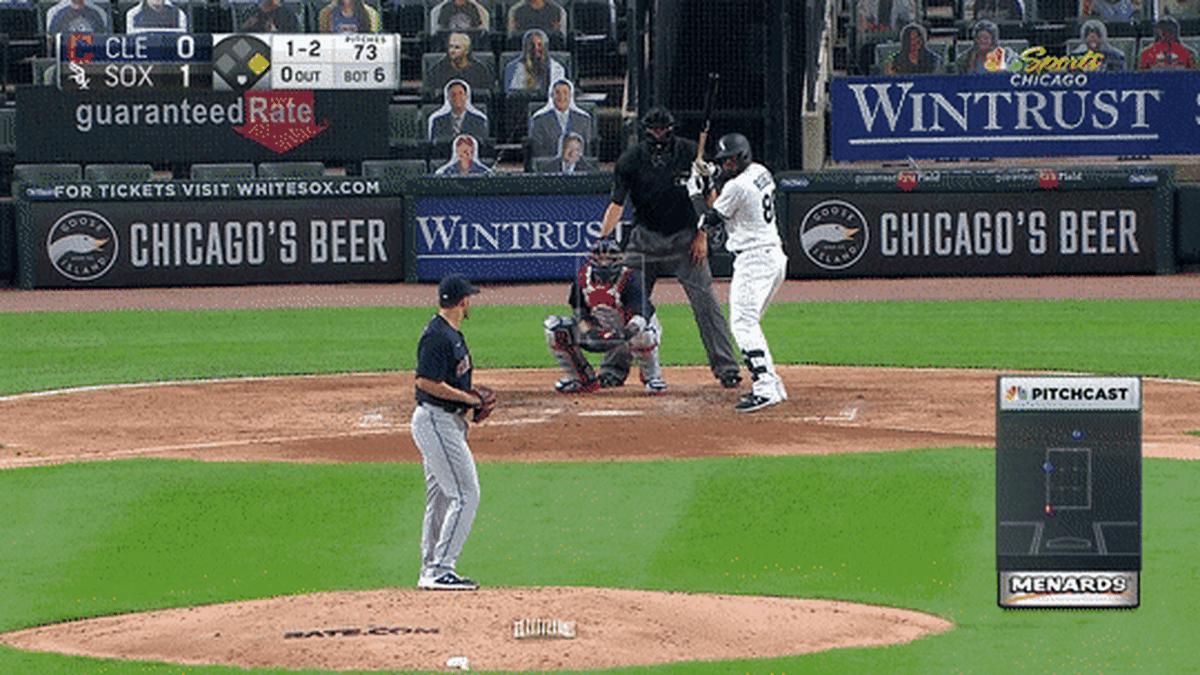
Contrast these results with what we've seen more recently: pop-ups and foul balls galore. Robert has one hit against a fastball with at least a 2300 rpm spin rate this month, and that was a broken-bat, infield single.
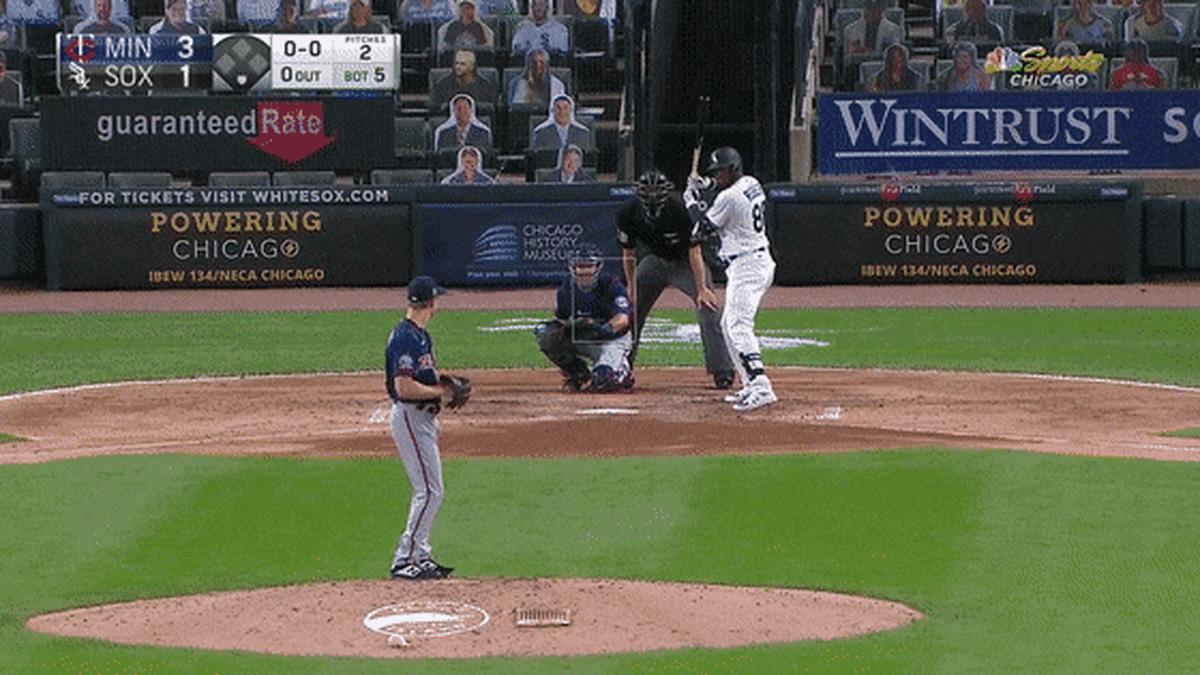
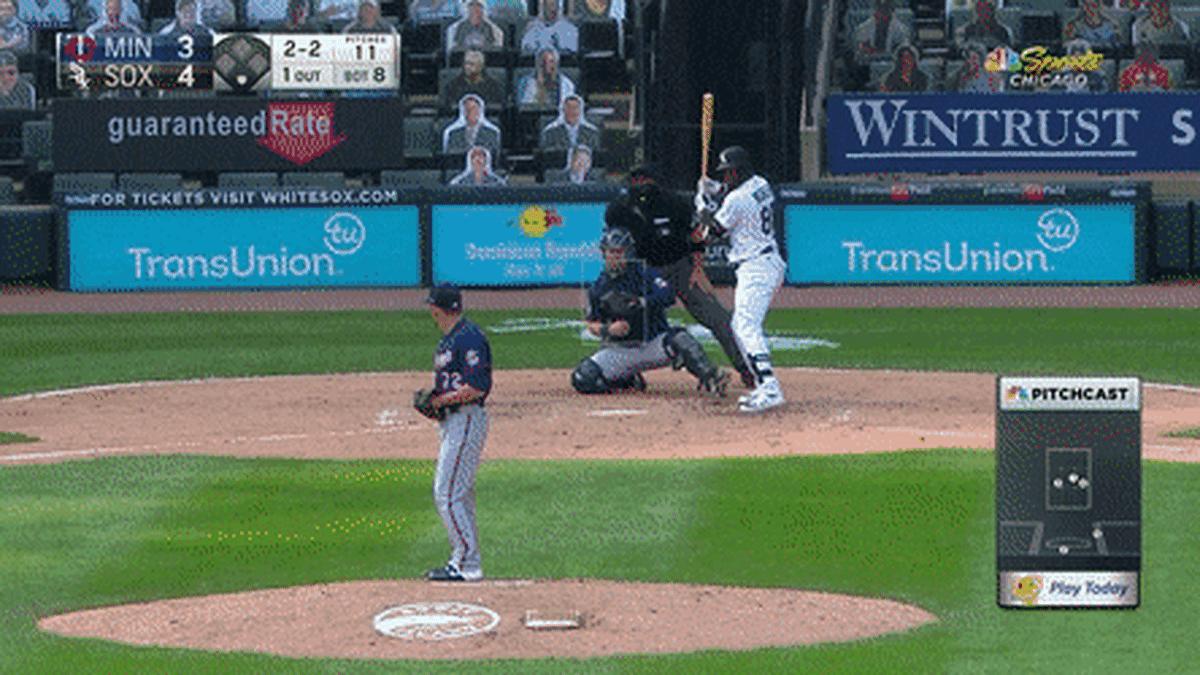
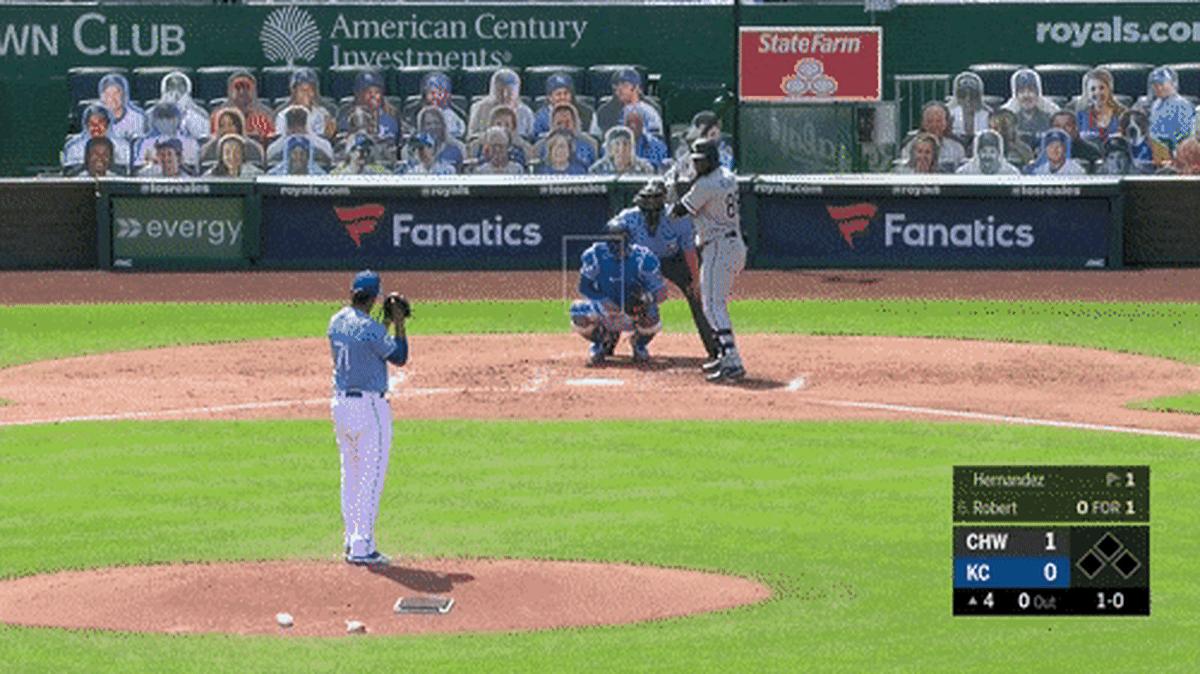
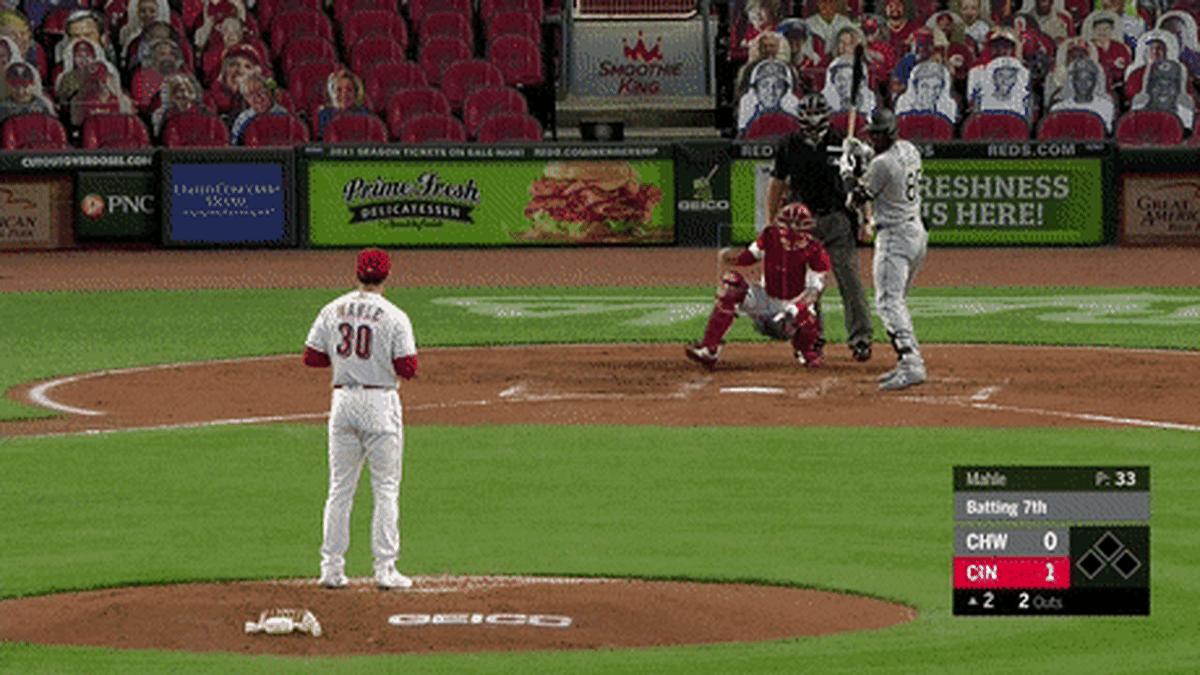
So, what's the remedy? Swing down on the ball?
Not exactly, but a subtle change that's more mental than physical may work.
From collegiate playing experience, I can understand Robert's struggle when he feels like he is on most every pitch, but is underneath everything. Now, I don't have experience against upper-90s heaters and sword-inducing breaking stuff, but generally the feeling of frustration is mutual. What I've done in the past is literally attempt to put the barrel of the bat an inch or two higher than where it normally be given where my brain is telling me the pitch will end up. I'm not trying to "swing down" on the ball, I just want to adjust my swing plane to match the approach angle of the pitch. It's not a specific effort of barrel placement; it's more of a mental cue.
I'm not exactly sure what the White Sox coaching staff or veteran players have advised Robert to help him get out of this slump, but sometimes something simple (and maybe something that seems stupid) to think about can do wonders for breaking out of a tough stretch.
The crazy thing about hitting is that it can be a matter of an inch whether you foul a pitch off or destroy a baseball like this.
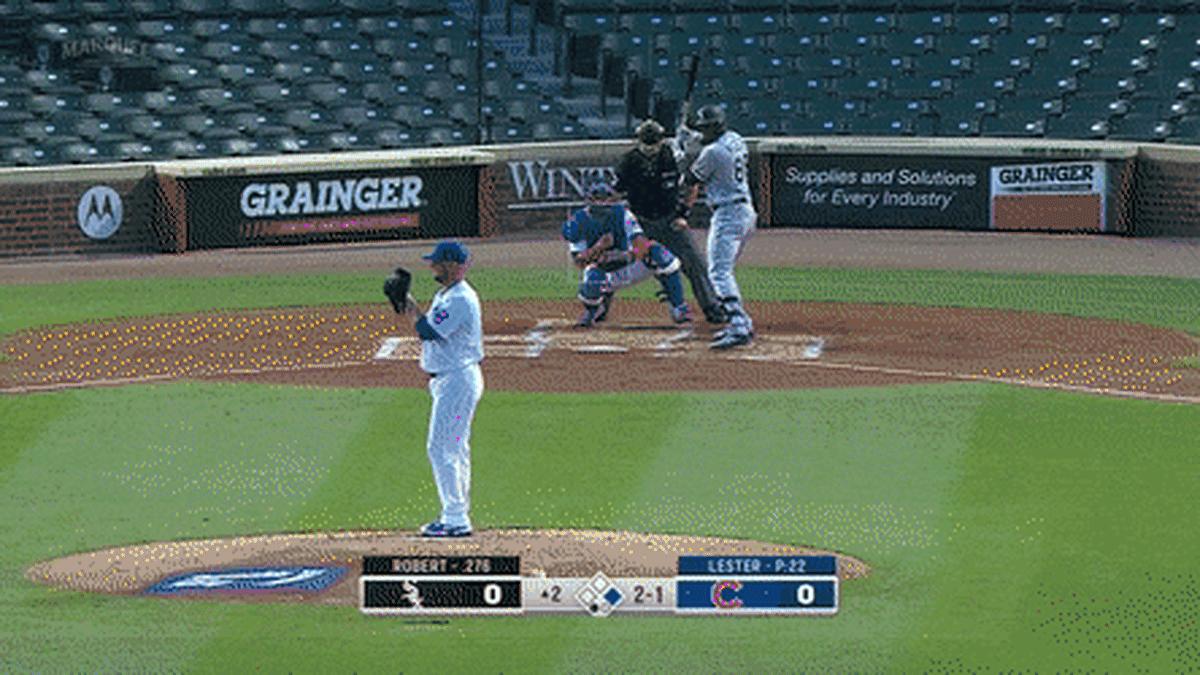
The good news for Robert is that this slump does not appear to signal a significant problem. There hasn't been a significant change to his plate discipline profile, and there hasn't been an apparent swing mechanics change. He just needs to focus on hitting the top half of the baseball until he's squaring pitches up again. By making a mental over-adjustment, the results should get back closer to what we saw pre-September.
Struggling to square up pitches in the heart of the zone is an issue that both Josh Bell and Kole Calhoun had for their respective teams up until September 1.
Bell came into September hitting .212/.270/.336 with a .264 wOBA and a 62 wRC+. His Whiff% plus foul ball rate in the heart of the zone was 49% through August and has improved since to 31%. This improvement has corresponded to Bell hitting .296/.409/.481 with a .376 wOBA and a 136 wRC+ in September.
Calhoun saw a 14% (43% to 29%) improvement, going from a .212/.336./478, .350 wOBA, 116 wRC+ first half (which is not bad at all) to a .250/.354/.654, .402 wOBA, 151 wRC+ in the last three weeks (which is fantastic).
Slumps happen, especially for rookies. In a normal season, we would be in mid-May with more than 100 games to go. The abnormal situation Robert has been thrown into to start his career makes him figuring this spell out within the next week more important — and this is probably unfair to him and his development.
Just for comparison, Kyle Schwarber has a 37 wRC+ in September, Anthony Rizzo is at 40 wRC+, Nolan Arenado 51 wRC+, Javier Baéz 60 wRC+, Vlad Guerrero Jr. 67 wRC+ and Charlie Blackmon (who some thought could hit .400 this year) 61 wRC+ this month.
Not only does Robert need to take a couple of deep breaths, so do White Sox fans. The player we saw in July and August is not far off.
